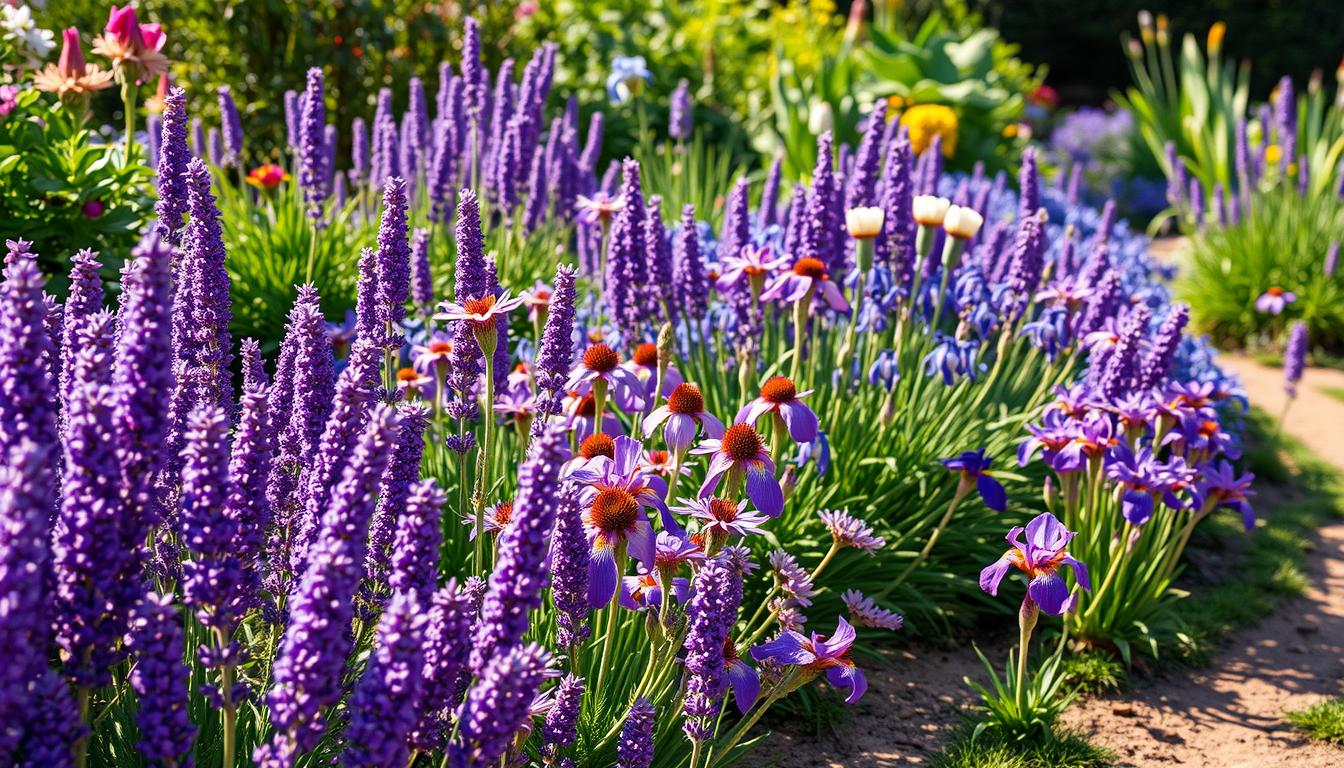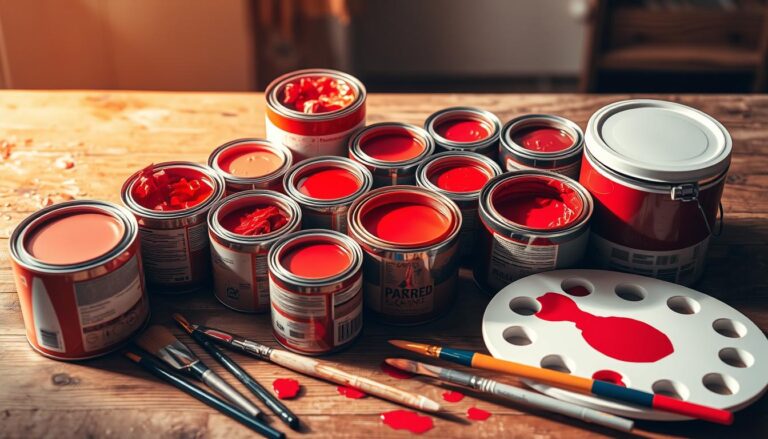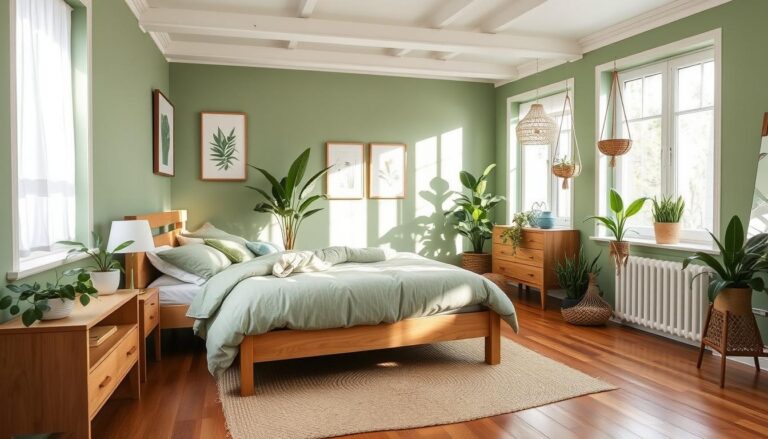Purple Perennials: Decorating with Nature’s Jewels
Every garden has a story, and purple perennials are the elegant storytellers. When I first saw the power of violet flowers, my backyard changed. It became a canvas of royal hues and mesmerizing textures.
Purple perennials do more than look good. They create magical moments in gardens, attracting pollinators. They add depth that turns ordinary landscapes into extraordinary botanical experiences. Whether you’re a seasoned gardener or a weekend enthusiast, these vibrant violet flowers can make your outdoor design pop with little effort.
From soft lavender tones to rich royal purples, these perennials offer a stunning palette. They fit various garden styles. Their versatility lets you create intimate, tranquil spaces or bold, dramatic landscapes that capture attention and imagination.
Key Takeaways
- Purple perennials add elegance and visual depth to gardens
- Violet flowers attract beneficial pollinators
- These plants work in multiple landscape design styles
- Purple blooms offer versatile color ranges
- Perennials provide long-lasting garden beauty
Understanding Purple Perennials and Their Impact in Garden Design
Purple flowers add magic to gardens, offering more than looks. They create stunning focal points and add depth and sophistication. Lavender plants are great for gardens because they are easy to care for and beautiful.
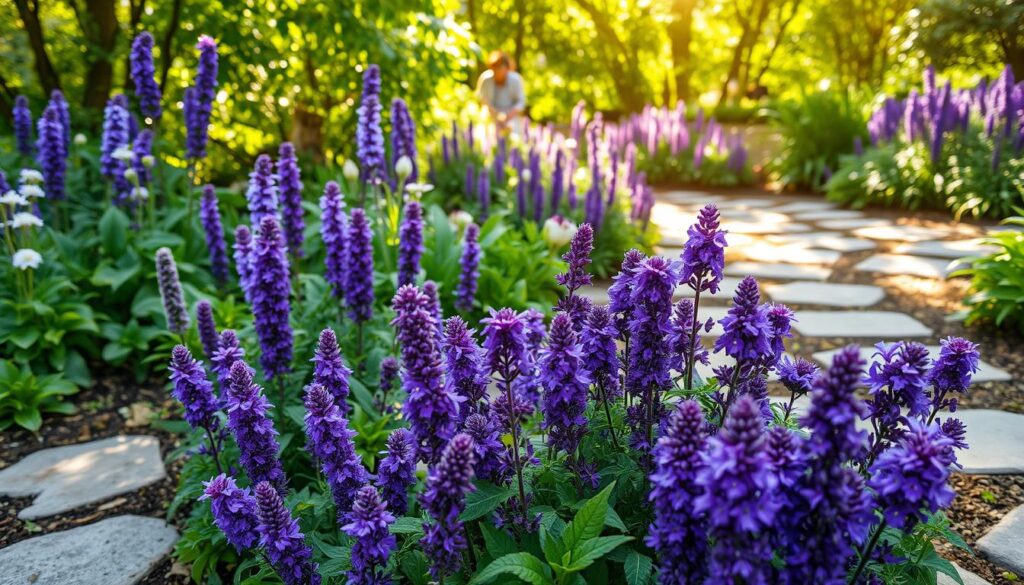
Color Psychology of Purple in Landscaping
Purple stands for creativity, luxury, and calm in gardens. Adding these flowers brings elegance and peace to your outdoor space. It makes your garden feel serene and classy.
- Symbolizes royalty and nobility
- Creates a sense of mystery
- Promotes relaxation and contemplation
Benefits of Purple Flowers in Garden Composition
Placing purple perennials wisely can make your garden look amazing. They fill gaps between plants and make designs flow smoothly.
| Purple Flower Type | Garden Impact | Maintenance Level |
|---|---|---|
| Lavender | Soft texture, calming presence | Low |
| Salvia | Vertical interest, attracts pollinators | Low |
| Iris | Bold structural element | Moderate |
Creating Visual Depth with Purple Blooms
Purple perennials are great for adding depth to gardens. By choosing plants of different heights and textures, you can make your garden look bigger and more lively. This is perfect for low-maintenance gardens that need little care but look great all year.
- Plant taller purple varieties in background
- Use medium-height plants as transition zones
- Add low-growing purple ground covers
Top Hardy Purple Perennials for Year-Round Beauty
To make your garden look amazing, pick the right long-blooming perennials. These plants can handle different weather. Purple flowers are perfect for adding color and life to your outdoor space all year.
Turn your garden into a colorful masterpiece. Choose purple perennials that bloom from spring to winter.
Spring Purple Blooming Varieties
Spring brings many purple perennials to your garden:
- Iris (Iris germanica): Rich purple blooms with elegant form
- Crocus: Early-season purple flowers signaling winter’s end
- Lilac (Syringa): Fragrant clusters of purple blossoms
Summer and Fall Purple Performers
Summer and autumn have their own purple perennials:
- Lavender (Lavandula): Drought-resistant with continuous purple spikes
- Salvia: Vibrant purple flower clusters attracting pollinators
- Asters: Late-season purple blooms supporting beneficial insects
Winter-Interest Purple Plants
Keep your garden looking good even in winter with these purple plants:
- Coral Bells (Heuchera): Purple foliage providing winter texture
- Beautyberry (Callicarpa): Purple berries adding winter interest
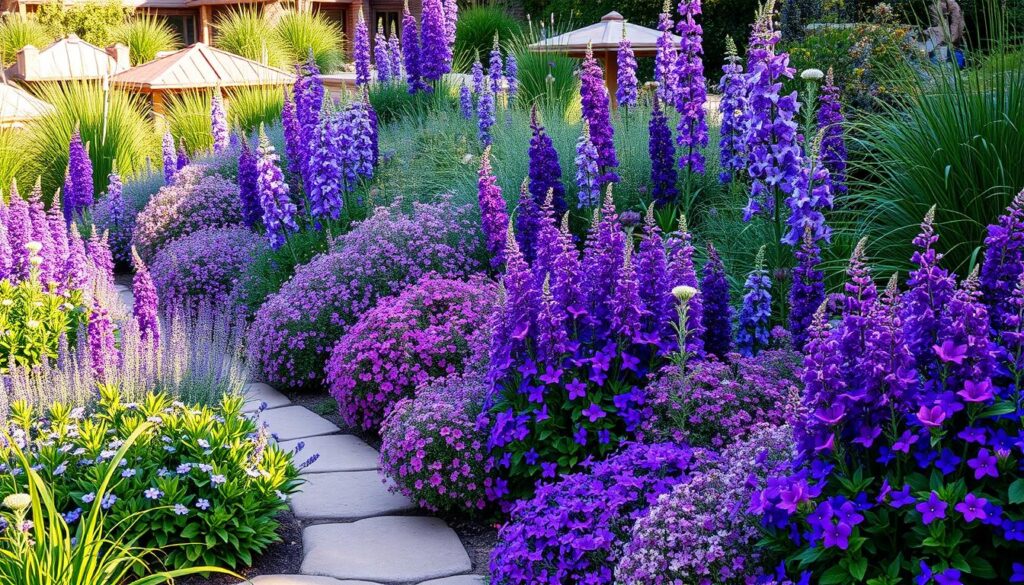
| Season | Purple Perennial | Key Characteristics |
|---|---|---|
| Spring | Iris | Elegant blooms, multiple varieties |
| Summer | Lavender | Drought-resistant, fragrant |
| Fall | Asters | Late-season color, pollinator-friendly |
| Winter | Coral Bells | Persistent purple foliage |
Creating Stunning Garden Combinations with Purple Perennials
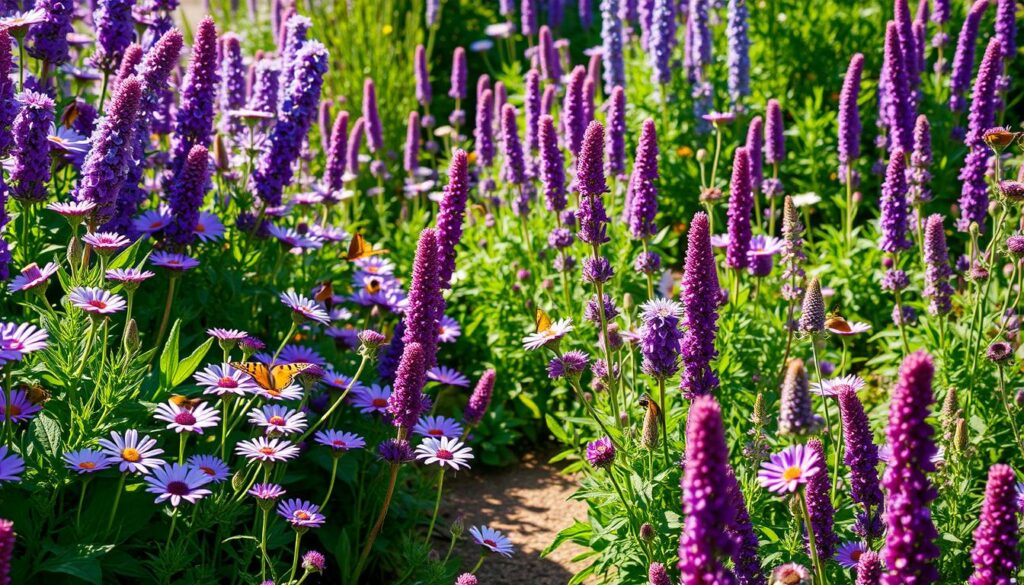
Creating a beautiful garden with purple perennials needs careful planning. You want to mix plants that look good together and help the environment. By choosing the right plants, your garden can become a lively space for pollinators.
When designing your garden, keep these tips in mind:
- Pair deep purple salvias with silver-leaved plants for dramatic contrast
- Combine lavender with yellow coreopsis to create eye-catching color relationships
- Mix different purple flower heights to add depth and visual interest
Color theory is key in garden design. Purple flowers are great as main attractions or supporting colors. They link different parts of the garden and draw in helpful pollinators.
Water-saving gardeners will love purple perennials. These plants save water and add beauty all year round.
- Select native purple perennials for best ecological performance
- Group plants with similar water and sunlight requirements
- Use mulch to retain soil moisture and support plant health
Understanding how plants work together and their needs helps create a beautiful, lasting purple perennial garden.
Maintenance Tips for Thriving Purple Garden Displays
Creating low-maintenance gardens with purple flowers is easy. These plants let you design stunning landscapes with little effort. By following some key maintenance tips, your purple garden will stay vibrant and healthy all year.
Soil Requirements and Preparation
Starting a purple perennial garden needs the right soil. Most purple flowers do well in well-draining soil with lots of organic matter. Here’s how to make the perfect soil:
- Test soil pH before planting (most purple perennials prefer slightly acidic soil)
- Incorporate compost to improve soil structure
- Ensure adequate drainage to prevent root rot
- Add organic mulch to retain moisture and suppress weeds
Watering and Fertilization Guidelines
Watering and fertilizing wisely is key to low-maintenance gardens. Many purple perennials are drought-resistant, making care easier.
- Water deeply but infrequently to encourage strong root development
- Use slow-release fertilizers for consistent nutrition
- Apply fertilizer in early spring before active growth begins
- Choose native purple perennials adapted to your local climate
Pruning and Deadheading Techniques
Proper pruning keeps your purple perennials blooming all season. Here are some easy tips to keep your garden looking great:
- Remove spent blooms to encourage additional flowering
- Cut back perennials in late fall or early spring
- Use clean, sharp pruning tools to prevent plant damage
- Prune immediately after flowering for most purple perennial varieties

